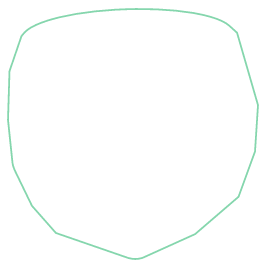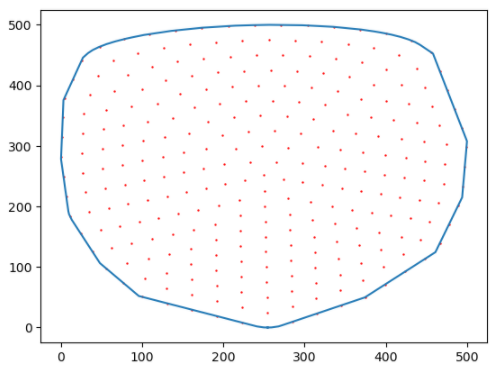This is the best I could manage. It does not result in equal surface area per polygon, but it turned out to work for what I needed. This populates a shape with a specific number of points (if the parameters are kept constant, the number of points will be too). Then the points are converted to a voronoi, which was then turned into triangles.
from shapely import affinity
from shapely.geometry.multipolygon import MultiPolygon
from scipy.spatial import Voronoi
# Voronoi doesn't work properly with points below (0,0) so set lowest point to (0,0)
shape = affinity.translate(shape, -shape_a.bounds[0], -shape_a.bounds[1])
points = shape_to_points(shape)
vor = points_to_voronoi(points)
triangles = MultiPolygon(triangulate(MultiLineString(vor)))
def shape_to_points(shape, num = 10, smaller_versions = 10):
points = []
# Take the shape, shrink it by a factor (first iteration factor=1), and then
# take points around the contours
for shrink_factor in range(0,smaller_versions,1):
# calculate the shrinking factor
shrink_factor = smaller_versions - shrink_factor
shrink_factor = shrink_factor / float(smaller_versions)
# actually shrink - first iteration it remains at 1:1
smaller_shape = affinity.scale(shape, shrink_factor, shrink_factor)
# Interpolate numbers around the boundary of the shape
for i in range(0,int(num*shrink_factor),1):
i = i / int(num*shrink_factor)
x,y = smaller_shape.interpolate(i, normalized=True).xy
points.append( (x[0],y[0]))
# add the origin
x,y = smaller_shape.centroid.xy
points.append( (x[0], y[0]) ) # near, but usually not add (0,0)
points = np.array(points)
return points
def points_to_voronoi(points):
vor = Voronoi(points)
vertices = [ x for x in vor.ridge_vertices if -1 not in x]
# For some reason, some vertices were seen as super, super long. Probably also infinite lines, so take them out
lines = [ LineString(vor.vertices[x]) for x in vertices if not vor.vertices[x].max() > 50000]
return MultiLineString(lines)
This is the input shape:
![enter image description here]()
This is after shape_to_points:
![enter image description here]()
This is after points_to_voronoi
![enter image description here]()
And then we can triangulate the voronoi:
![enter image description here]()




